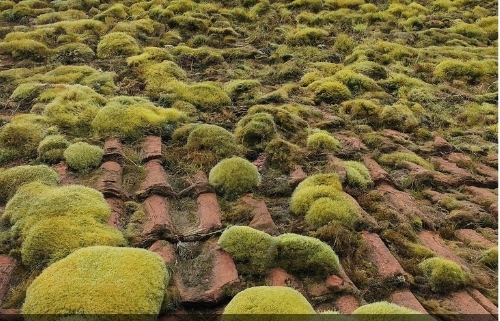Effective Lichen Removal for Property Maintenance: A Guide
 Lichen, a symbiotic organism formed from algae and fungi, often finds its home on roofs, walls, and other exterior surfaces of buildings. While it might seem harmless, its presence can lead to several issues, including aesthetic degradation and potential structural damage. As chartered surveyors, maintaining the integrity and appearance of properties is paramount. Here, we present a comprehensive guide on effectively removing lichen to ensure the longevity and appeal of your properties.
Lichen, a symbiotic organism formed from algae and fungi, often finds its home on roofs, walls, and other exterior surfaces of buildings. While it might seem harmless, its presence can lead to several issues, including aesthetic degradation and potential structural damage. As chartered surveyors, maintaining the integrity and appearance of properties is paramount. Here, we present a comprehensive guide on effectively removing lichen to ensure the longevity and appeal of your properties.
Understanding Lichen and Its Impact
Lichen thrives in environments with ample moisture and sunlight. It attaches firmly to surfaces, making it challenging to remove. Though it grows slowly, its persistent nature can lead to:
Structural Damage: Over time, lichen can cause minor structural damage. Its roots penetrate small cracks in surfaces, which can expand when water enters and freezes.
Aesthetic Concerns: The appearance of lichen on buildings can be unsightly, potentially reducing property value and curb appeal.
Surface Degradation: On roofs, lichen can cause shingles to lift or degrade, leading to potential leaks and other roofing issues.
Steps for Effective Lichen Removal
Assessment and Safety Precautions:
Begin with a thorough assessment of the affected areas. Note the extent of the lichen growth and any potential structural vulnerabilities.
Prioritize safety by wearing protective gear such as gloves, safety goggles, and a mask. Ensure that ladders and scaffolding are stable if working at heights.
Choosing the Right Cleaning Method:
Manual Removal: For smaller areas, manual removal using a stiff brush and mild detergent can be effective. Wet the surface first to loosen the lichen.
Chemical Treatments: There are various commercial lichen removers available. Apply these according to the manufacturer’s instructions, usually involving spraying the solution and allowing it to sit before rinsing off.
Pressure Washing: For extensive growth, pressure washing can be a quick solution. However, use caution to avoid damaging surfaces, especially on older or more
delicate materials.
Preventative Measures:
After cleaning, consider applying a protective coating to surfaces to inhibit future lichen growth.
Regular maintenance and inspections can help identify and address lichen before it becomes a significant issue.
Environmental Considerations
As surveyors committed to sustainable practices, it is crucial to consider the environmental impact of lichen removal methods:
Chemical Runoff: Be mindful of chemical runoff, especially near gardens or water sources. Opt for environmentally friendly products when possible.
Disposal of Waste: Properly dispose of removed lichen and any debris to prevent it from spreading to other areas.
Professional Assistance
While DIY methods can be effective, professional services may be necessary for extensive infestations or challenging locations. Hogbans Chartered Surveyors offers comprehensive lichen removal and property maintenance services to ensure your buildings remain in optimal condition.
Conclusion
Lichen removal is an essential aspect of property maintenance that helps preserve the structural integrity and aesthetic appeal of buildings. By following these steps and considering environmental impacts, property owners and managers can effectively manage lichen growth. For expert advice and services, trust Hogbans Chartered Surveyors to maintain your properties with the highest standards of care.





